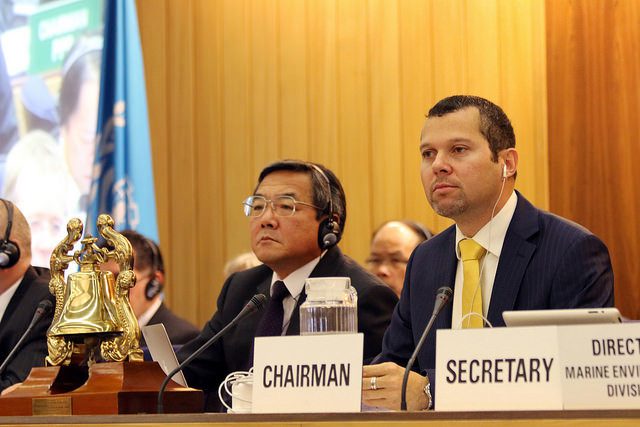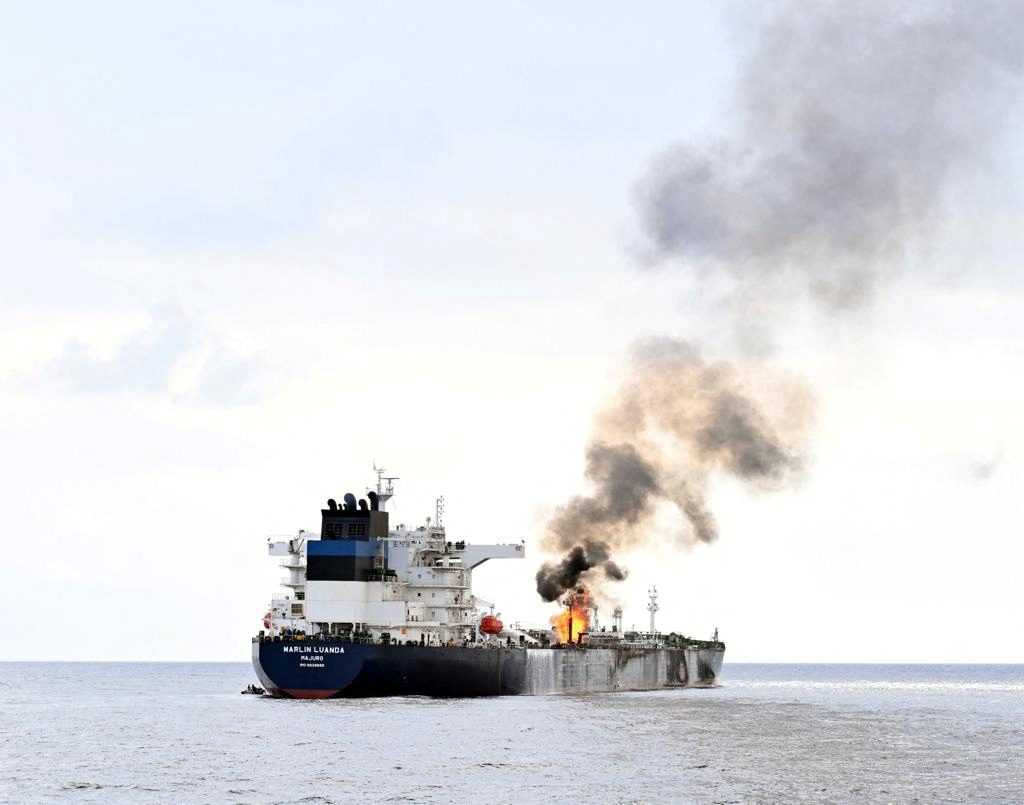MO Secretary-General Sekimizu (pictured left) has opened the Marine Environment Protection Committee (MEPC) 67th session? (13-17 October 2014), chaired by Mr. Arsenio Dominguez of Panama (pictured right). Image: IMO
Unique issues face mariners and ships that ply the icy waters that surround the polar regions. Issues such as ship design, construction, on-board equipment, operations, seafarer training, search and rescue and environmental protection do not translate successfully when a ship enters this environment.
The Marine Environment Protection Committee (MEPC) met this week at the International Maritime Organization to work toward the development of the Polar Code, a set of rules that will govern these important, and unique issues and have come up with draft that will form the framework of the final code which is set to be adopted at the next Committee meeting in May 2015.
Once adopted, the Polar Code and MARPOL amendments could enter into force on 1 January 2017.
For ships with waypoints in the high latitudes, this would mean the requirement to apply in advance for a Polar Ship Certificate that defines where and when it could operate.
The IMO notes,
“Ships would need to carry a Polar Water Operational Manual, to provide the Owner, Operator, Master and crew with sufficient information regarding the ship’s operational capabilities and limitations in order to support their decision-making process.”
With the Antarctic region a fairly familiar one for ships supporting research as well as cruise vessels, MARPOL Annexes I and V have addressed many issues that will be replicated in the Polar Code.
The IMO notes the MEPC approved the preamble, introduction and part II of the Polar Code this week, which includes mandatory provisions in chapters covering the following topics:
• prevention of pollution by oil, including discharge restrictions prohibiting any discharge into the sea of oil or oily mixtures from any ship, as well as structural requirements including protective location of fuel-oil and cargo tanks;
• control of pollution by noxious liquid substances in bulk, prohibiting any discharge into the sea of noxious liquid substances, or mixtures containing such substances;
• prevention of pollution by sewage from ships, prohibiting the discharge of sewage except for comminuted and disinfected sewage under specific circumstances, including a specified distance from ice;
• prevention of pollution by garbage from ships, adding additional restrictions to the permitted discharges (under MARPOL Annex V, discharge of all garbage into the sea is prohibited, except as provided otherwise). Food wastes shall not be discharged onto the ice and discharge into the sea of comminuted and ground food wastes is only permitted under specific circumstances including at a not less than 12 nautical miles from the nearest land, ice-shelf or fast ice. Only certain cargo residues, classified as not harmful to the marine environment, can be discharged.
Also approved were draft amendments to MARPOL Annexes I (prevention of pollution by oil from ships), II (noxious liquid substances), IV (sewage) and V (garbage) to bring the introduction and corresponding chapters in part II-A of the Polar Code into force under those annexes. Recommendations in Part II-B of the Polar Code were approved, including a recommendation to refrain from carrying heavy fuel oil as cargo or fuel in the Arctic (a current regulation in MARPOL Annex 1 already prohibits the carriage of such fuel in the Antarctic); and a recommendation to apply the standards contained in the International Convention for the Control and Management of Ships’ Ballast Water and Sediments (BWM Convention), 2004 (this instrument has not yet entered into force).
In May 2014, IMO’s Maritime Safety Committee (MSC), approved the Introduction and part I (safety provisions) of the Polar Code, along with a draft new chapter XIV of the International Convention for the Safety of Life at Sea (SOLAS) on “Safety measures for ships operating in polar waters”. The MSC will consider the adoption of the Polar Code and SOLAS amendments at its next session (MSC 94, 17 to 21 November). Once adopted, it is expected that the SOLAS amendments making the Polar Code mandatory would enter into force on 1 January 2017.
Unlock Exclusive Insights Today!
Join the gCaptain Club for curated content, insider opinions, and vibrant community discussions.

 Join The Club
Join The Club













